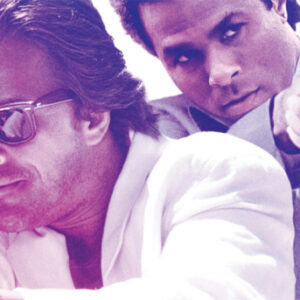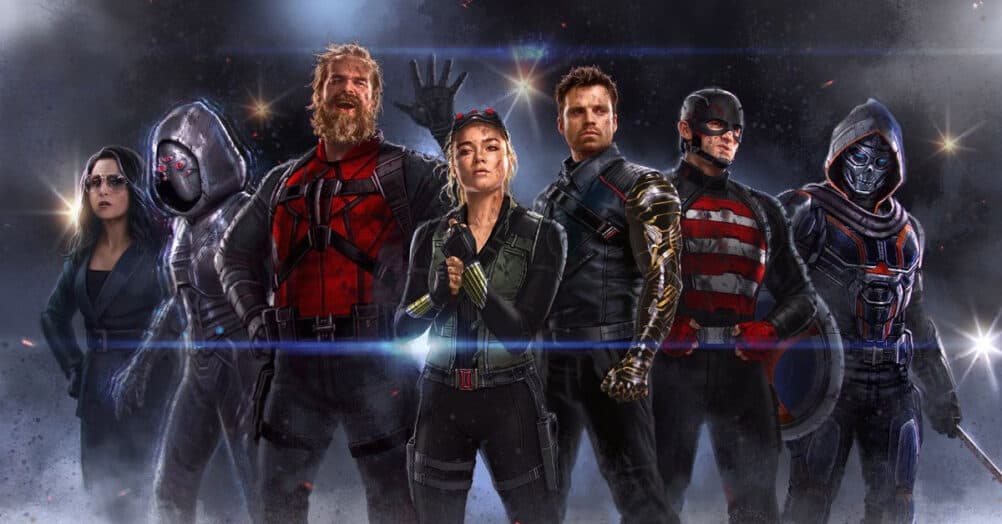Last Updated on August 5, 2021

THE UNPOPULAR OPINION is an ongoing column featuring different takes on films that either the writer HATED, but that the majority of film fans LOVED, or that the writer LOVED, but that most others LOATHED. We’re hoping this column will promote constructive and geek fueled discussion. Enjoy!
MIAMI VICE is my very favorite Michael Mann movie. Even with often being ranked by fans as one of his worst, every time I watch something made by Mann (and I’ve seen them all) I find myself in the mood to watch MIAMI VICE again. Which got me thinking: I’ve seen MIAMI VICE seven times now and still love it. So what’s going on? Why does a movie with a 47% rating on Rotten Tomatoes strike me so deeply? In pursuit of an answer I watched it again, and I’m starting to think I may know now. So if you’ve got the time, let’s discuss some crime!

“Do you wanna f*** my partner or do you wanna do business with us? ‘Cause I don’t give a shit how you think he looks.”
Let’s first talk characters, as that’s the area in which most critics of the movie seem to say MIAMI VICE is lacking. To me what’s going on is not that these characters are weak or two dimensional, but rather that their objectives and motivations are just very simple in a way stories often seem to lack. Their desires and fears, their objectives and the routes they choose to achieve those objectives – it’s all direct and to the point. No more and no less than any other Mann film, be it ALI or LAST OF THE MOHICANS.
Ricardo and Sonny constantly show that what they care about is the welfare of others – no doubt it’s why they’re cops. They just have different ways in which they show that care, and it is that care from which any other character detail springs. Within the first seven minutes of the film we see Ricardo willing to delay the operation at hand in order to protect a call girl who is being beat up by her pimp, just as how in COLLATERAL’s beginning we learn about Max’s dreams and what they mean to him. Likewise with Sonny – in the opening moments of the film, when he gets a call from a past informant saying that things have gone all wrong and he is in some serious trouble, Sonny loses no time in trying to do whatever he can to help the man. You could argue that this is what any good policeman would do for the sake of an asset, but Sonny’s attitude towards both punishing those responsible and (later) protecting the woman he has fallen in love with remains constant and impassioned throughout the whole of the film.
Yes, it’s true that some of the other characters are significantly less fleshed out – even after seven viewings I still don’t know the names of several characters, and Yero gets one of the most boring introductions for a villain in recent film history. But the main two, the ones whose actions and intentions fundamentally drive the film? I do believe that they’re very much there. We know all we need to know about them, with nothing extraneous being thrown into the mix.

“Things go wrong. The odds catch up. Probability is like gravity: you cannot negotiate with gravity.”
MIAMI VICE is also damn beautiful to look at, though you’re right in thinking this alone is not enough. It’s not just a matter of how pretty the film is (my face when I watched it on Blu Ray) – what matters is how the shots, color, framing, and camera work serve the story and the characters. Which is something this movie does every bit as well as any other movie Mann has made. As an example: the picture above is from a scene where Ricardo and Sonny are talking to the FBI agent responsible for their old informant, when all of a sudden there is this shot that shows the city of Miami represented by a sea of white and red spots that paint the sky a faint blood red. It’s Mann’s way, just as can be seen with other filmmakers like Terrence Malick, of using the environment of a film to tell us all we need to know about the characters and their state of being.
There’s something else that can be seen in the above picture that is an ever present element in the way MIAMI VICE is shot: Mann makes it a point to almost always place the main players in a scene on one or both sides of every shot, thereby making sure that the world these characters live in is as much a character in and of itself. He takes full advantage of the breadth of his audience’s vision, filling the entire screen with visual cues and information as living characters navigate a world that, due to Mann’s camera work and a kind of picture composition that serves to direct the energy of our focus, is constantly alive and in motion. He has an awareness in this movie of how human action reflects on the world, and that world’s importance in the lives of those living in it.

“Thats not what happens. What will happen is… what will happen is I will put a round at twenty-seven hundred feet per second into the medulla at the base of your brain. And you will be dead from the neck down before your body knows it. Your finger wont even twitch. Only you get dead. So tell me, sport, do you believe that?”
Because this is a Michael Mann movie you know the soundtrack is going to be something special, and here to is a way in which MIAMI VICE delivers better than almost any other of Mann’s movies (except for maybe HEAT). Each song has a different resonance in relation to its place in the film, and each song perfectly melds with the mood of the moment. The soundtrack is a master class in what soundtracks should always do – both support and elevate the visuals. A Rabbi once said: “the purpose of poetry is to stretch words, and the purpose of music is to do what words cannot.” Mann knows this intimately, and proves so by how his choices of songs and music speak volumes about both the scenes in which they appear and what will happen in time to the characters involved in those scenes. See his use of Moby’s “One of These Mornings” for a perfect example of this. It’s completely relevant to the moment, is a great song in and of itself, and tells us a great deal about the relationship between Sonny and Isabella.
Beyond even all that I’ve said, I’d argue that while the story suffers pacing problems around midway (Sonny’s visit to Cuba definitely drags) the last half an hour or so is particularly well paced. New elements and events and conditions are layered on as Mann ratchets up the tension and human connection to those events. This is all amped up to another level by the camera work during the final shootout – a stable kind of “shakycam” (I know it sounds oxymoronic) is used to bring a motion and earnestness to the field in ways that other similar movies fail to do, moving organically to show us the breadth of the battlefield and help us to experience the fight just as the combatants do. Speaking of pacing, I think it is fair to say that at a runtime of 2:20 the movie could stand to lose about fifteen minutes – the script should probably have just been tightened all around, with bits and pieces trimmed all over as not to lose 1) what is established about the characters in the beginning and 2) the carefully-constructed escalation of the ending.
MIAMI VICE is, to me, the ultimate combination of “slice of life film” and “traditional plot-driven film.” This is one case out of many for Ricardo and Sonny, and as Sonny shows by how he leaves Isabella at the end to return to Rciardo and Trudy at the hospital, life goes on. Vice yet remains in Miami, morally-challenged men still spread their operations across the world, and Ricardo and Sonny will continue to do their jobs until the day they die.

“I’m gonna tell you what’s gonna happen. People are gonna come in here, and you know what they gonna say? They gonna look around and go ‘Ola Hijo. That’s some crazy motherfucking wallpaper, what is that? Jackson Pollock?'”


































Follow the JOBLO MOVIE NETWORK
Follow us on YOUTUBE
Follow ARROW IN THE HEAD
Follow AITH on YOUTUBE